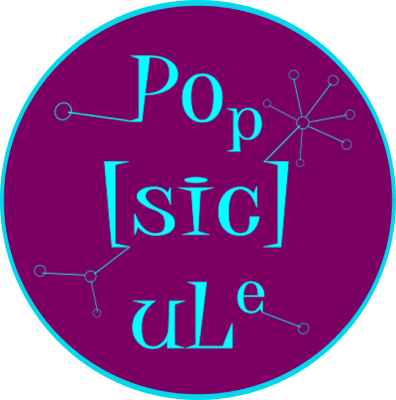By Jaquelen Huang – A ‘Science & Humour’ Project (SCOM2006, 2024)

“Poly’s Tour in Sydney” is a creative educational cartoon exploring the impacts of plastic pollution on Australian wildlife and landscapes.
The cartoon aims to engage young-aged children by presenting scientific information humorously. Through combining anthropomorphism, wordplay and visual humour in insightful conversations and educational scenes about environmental science, complex scientific concepts are designed to be more approachable and relatable. This project makes the topic more accessible and engaging for children, while at the same time raising environmental awareness and encouraging behavioural change towards the environment.
Humour in science communication serves as a power tool for engagement, making complex concepts more approachable and accessible. Riesch (2014) highlights humour has consistently been recognised as an effective means of connecting with the public, as it not only captures attention but also makes the material more approachable. This approach was applied in “Poly’s Tour in Sydney”, which strategically uses positive and non-aggressive humour to create a more engaging science communication experience for younger-age children with both science and non-science knowledge (Chan and Udalagama, 2021); also improving memory recall and behaviour adaptation in educational settings (Tunku Badli and Dzulkifli, 2013; Topp, Thai and Hryciw, 2019). It makes the cartoon suitable for children in younger age, as they are attracted to the visual elements, while entertaining with the humour and accessible scientific concepts.
Children in younger age (aged 2-7) have a strong preference in visual humour, learning about the concepts through what they see (Buijzen and Valkenburg, 2004). To effectively capture younger audiences attention, the physical appearance of animals and inanimate objects in “Poly’s Tour in Sydney” was intentionally designed around the concept of cuteness. Through incorporating exaggerated features, bright colours, cuteness creates a sense of warmth and amusement, providing a positive humorous learning environment (Takamatsu, Takashi Kusumi and Hiroshi Nittono, 2023). The non-invasive and playful nature of cuteness-based humour matches children’s humour preferences and serves as an effective engagement and memorisation strategy. This concept, supported by visual humour and simplified jokes, ensures that children grasp key environmental concepts while enjoying the learning process. Additionally, wordplay creates one-line jokes, while engaging with scientific concepts related to plastic pollution, inspiring children with educational concepts (Lei, Cohen and Russler, 2010). The project captures attention and conveys relevant information via anthropomorphised character conversations and educational scenes, fostering children to connect with the concepts more effectively (McBride and Ball, 2022). As Thomas-Walters et al. (2020) emphasise contact with actual nature benefits and helps the public to visualise abstract scientific concepts. Hence, contact with local wildlife and landscapes humorously are referenced to make the content more relatable and memorable when raising awareness for environmental issues. However, Thomas-Walters et al. (2020) also raise concerns with respect to the type of animal imagery and messages they convey. The project thus creates a balance between the imaginative storytelling and scientific concepts through educational cartoon scenes with relevant accurate statistics, offering children an enjoyable and informative perspective on plastic pollution’s effects on Australian wildlife. This responds to Thomas-Walters et al. (2020)’s concerns, framing an approachable introduction of environmental science in the context of plastic pollution.
Anthropomorphism is present in everyday life and in scientific contexts, reflecting our ability to interpret the world by attributing human characteristics to non-human entities (Davies, 2010). According to McGellin et al. (2021), anthropomorphism in science communication influences audiences to change their behaviour. By imbuing local wildlife and iconic landscapes with human characteristics, emotions and thoughts, anthropomorphism makes abstract environmental issues – such as plastic pollution – more personal and relatable to children of all ages. The project uses anthropomorphism to frame the impacts of plastic pollution, while avoiding overcomplicated concepts. The project’s protagonists embody the struggles and adventures associated with environmental issues, effectively delivering the messages yet connecting children with the materials through emotional engagement. This allows the project to have a wider application than just complementing traditional teaching methods. For example, the cartoon could be accompanied by classroom discussions and field trips to inspire children to become more aware and environmentally responsible. In line with McGellin et al. (2021)’s observation, anthropomorphism in science communication effectively motivates children to embrace behavioural changes. These activities allow children to engage more deeply with the scientific concepts, while exploring the sceneries and animals while fostering a greater commitment to protecting the environment. Through the lens of anthropomorphism, the project can thus raise awareness about marine and terrestrial conservation, inspiring audiences to care about the environment.
In conclusion, “Poly’s Tour in Sydney” proposes a playful approach to science communication by integrating humour and anthropomorphism to address the pressing issue of plastic pollution. The use of engaging, humorous content clarifies complex environmental science concepts, making them accessible to children. The visual elements of the cartoon not only capture attention but also foster a deeper emotional connection with the audience, enhancing educational outcomes and inspiring behavioural change through anthropomorphic characters. Although concerns about the portrayal of animal imagery and messaging have been raised (Thomas-Walters et al., 2020), the project balances imaginative storytelling with accurate scientific information, offering a compelling and educational perspective on plastic pollution. Through this approach, “Poly’s Tour in Sydney” contributes to raising awareness about environmental issues, promoting conservation, and encouraging children to engage actively in protecting the environment.


